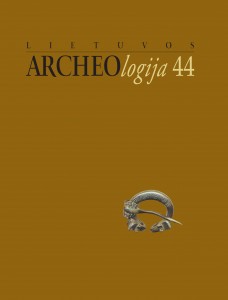SIGNALINIAI LAUŽAI LIETUVOS PILIAKALNIUOSE? TEORINIS ASPEKTAS
DID SIGNAL FIRES EXIST ON LITHUANIAN HILLFORTS? A THEORETICAL ASPECT
Author(s): Laurynas KurilaSubject(s): Cultural history, Customs / Folklore, Middle Ages
Published by: Lietuvos istorijos institutas
Keywords: hillforts; (re and smoke signals; communications; Migration period; Middle Ages;
Summary/Abstract: Fire and smoke signals were an important element of military communications for several millennia. this method was also definitely used in medieval Lithuania. A stereotypical image of wooden castles linked by fires is established in the literature, although this image has been directly confirmed by only a single episode in the Chronicle of Peter of Dusburg. The article attempts, on the basis of LiDAR data, to answer at a theoretical level, what possibilities existed for visual communications between Lithuanian hillforts, how much this was determined by the relief, and what additional resources were likely required for this. To this end, three sample regions were selected: the banks of the Nemunas and Samogitia during the struggle with the Teutonic Knights (late 13th–early 15th centuries) and Southeast Lithuania during the Migration period. It was determined that in the first region, linear links could have operated efectively and in the second, a lattice-shaped visual communications system is plausible, but in the third, any links between the hillforts would have been much more difficult. These differences should be associated with both the relief of these regions as well as different defensive needs. In the frst and second cases the castle systems functioned over a long period in the presence of the threat posed by the Teutonic Knights while the unexpected attacks in the third did not lead to the formation of an early warning system
Journal: Lietuvos archeologija
- Issue Year: 2018
- Issue No: 44
- Page Range: 71-115
- Page Count: 45
- Language: Lithuanian

